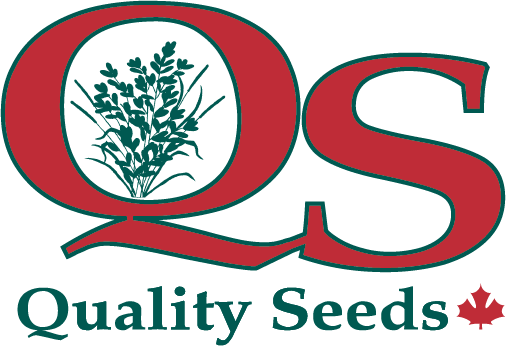Potato Leafhopper In Alfalfa
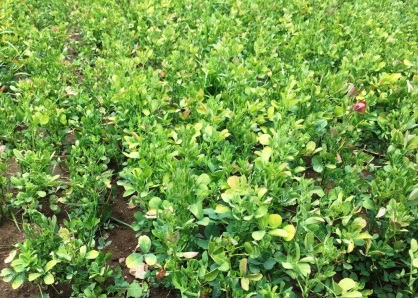
Potato leafhopper (PLH) is the most damaging alfalfa insect pest in Ontario. While the damage created is not as dramatic as an alfalfa weevil outbreak, leafhopper damage is more chronic and widespread. Hot, dry weather is high risk. Damage is most severe in new seedings and young regrowth.
Many farmers are unaware of the significance of PLH damage, which is often blamed on the hot, dry weather that frequently accompanies it. New alfalfa seeding establishment is particularly affected, permanently damaging the plants for the life of the stand. PLH damage in alfalfa was quite severe and extensive across the province in the hot, dry seasons of 2012 and 2017.
Tiny, Green & Wedge Shaped
PLH do not overwinter in Ontario, but migrate annually from the Gulf States carried on weather-front air currents. They usually begin arriving in late May. Adult leafhoppers are 3 mm (1/8th inch) long, lime green and wedge-shaped. The adults lay a few eggs per day in the alfalfa stems and petioles, which hatch about 9 days later. Juvenile leafhoppers, also called nymphs, are about 1 mm (1/32nd inch) when they hatch. They resemble adults, except they are wingless and are often found on the underside of the leaves.
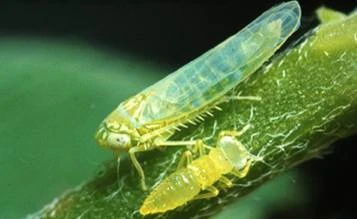

Figure 1 – Potato leafhopper adults are pale green, wedge-shaped, winged insects. Immature nymphs are smaller and wingless. (Photo credit – OMAFRA)
Explosive Growth
The generation interval is short, with about 25 days from egg laying to the adult stage. This gives the leafhopper the ability to have an explosive population growth. Farmers walking in their second and third cut alfalfa fields can often see leafhoppers flying or “hopping” sideways, as they are disturbed. PLH are killed by frost in the fall. Leafhoppers feed on a wide variety of host plants, including edible beans. Biological controls have not been very effective.
Hopperburn
Leafhoppers feed by inserting a stylet into a leaf midrib and sucking sap juices from the plant. They inject saliva containing a toxin into the plants as they feed. This causes abnormal cell growth and interferes with transportation of fluids and nutrients in the leaves. The result is the characteristic “hopperburn”, which starts as a wedge-shaped “V” yellowish pattern on the leaf tips. (Figure 2)
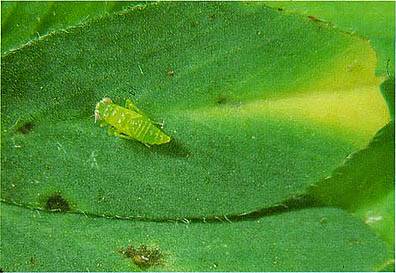

Figure 2 – Hopperburn symptoms start as a “V” yellowish pattern on the leaf tips. (Photo credit – OMAFRA)
Damage
PLH feeding causes reduced stem elongation, reduced root development, leaf cupping and stunting. Yields can be lowered by as much as 50% or more with a severe infestation, accompanied by 2 – 3% reduced protein levels. Decreased stand vigour results in slow regrowth following cutting and increased winterkill. New seedings and young regrowth are very susceptible. Most of the damage occurs from June to mid-August. Symptoms are sometimes confused with nutrient deficiency or herbicide injury, and are often dismissed as “drought damage”.
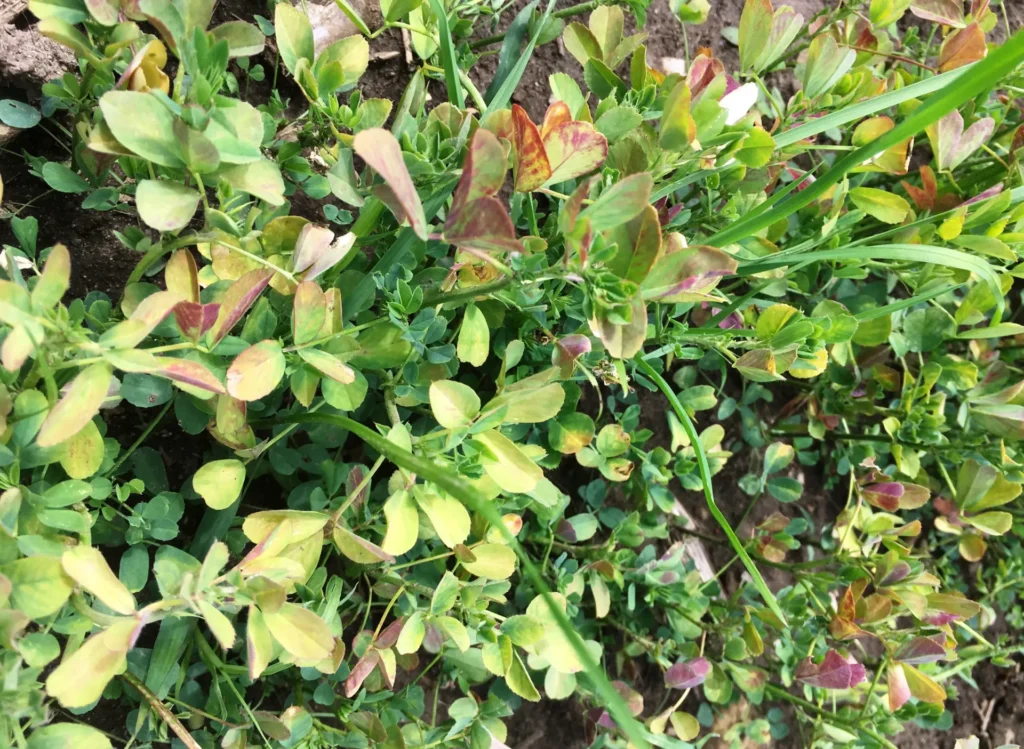



Figures 3 & 4 – Potato leafhopper injury is most severe in new seedlings and in young regrowth.
Scouting
Economic losses occur before plant symptoms develop, so it is important to identify the presence of large leafhopper populations before the damage occurs. Once damage is observed the damage is done and it is too late to effectively control. It is particularly important to monitor new seedings. Scouting with a sweep net will help you determine whether early harvest or spraying is needed. (OMAFRA Agronomy Guide 811, p. 251 http://www.omafra.gov.on.ca/english/crops/pub811/10field.htm#sweep) Scout at intervals of 5 to 7 days, beginning after first cut. To determine the number of leafhoppers, including adults and nymphs, take 10 sweeps and divide by 10. Do this in 5 representative areas of the field and note the height of the alfalfa. Suggested action thresholds are listed in Table 1.
Table 1 – Action Thresholds for Potato Leafhoppers in Alfalfa
Stem Height # of PLH per sweep
9 cm (3.5 in.) 0.2 adults
15 cm (6 in.) 0.5 adults
25 cm (10 in.) 1.0 adults or nymph
36 cm (14 in.) 2.0 adults or nymph
| Stem Height | # of PLH per sweep |
|---|---|
| 9 cm (3.5 in.) | 0.2 adults |
| 15 cm (6 in.) | 0.5 adults |
| 25 cm (10 in.) | 1.0 adults or nymph |
| 36 cm (14 in.) | 2.0 adults or nymph |


Figure 5 – Scouting for PLH using a sweep net.
Insecticide Control
Refer to OMAFRA Publication 812, Field Crop Protection Guide 2020-2021, p. 82 (http://www.omafra.gov.on.ca/english/crops/pub812/pub812.pdf) and product labels for insecticide information and restrictions, including application rates, pre-harvest intervals, label precautions and re-entry periods. Products include dimethoate (Cygon 480 EC, Lagon 480 EC) and cyhalothrin-lambda (Matador 120 E, Silencer 120 EC). These products are toxic to bees.
It should be noted that spraying insecticides on alfalfa will also kill beneficial insects, the natural enemies of PLH and alfalfa weevil.


Figure 6 – Untreated (left) versus insecticide applied (right) on 2nd-cut regrowth.
(Photo credit – Paul Sullivan, Kinburn)
PLH Resistant Varieties
PLH resistant alfalfa varieties, such as Quality Seeds 420LH, have been developed that have tiny glandular hairs on leaves and stems that provide tolerance to PLH. Treatment thresholds for HR varieties after the establishment year can be increased by 4 times those in Table 1. The glandular hairs are not fully expressed the first year, so while resistant varieties can dramatically reduce the PLH damage, damage and yield reductions can still occur. Treatment thresholds for HR varieties after the establishment year can be increased by 4 times those in Table 1. New seedings of PLH resistant varieties should be monitored and may still need to be sprayed when PLH pressure is above threshold levels.
PLH resistant varieties are particularly useful for farmers in the Niagara – Lake Erie area that have significant PLH damage in frequent years. Farmers that do not scout or spray to control PLH may find the use of PLH resistant varieties to be an easy and practical method to help manage the risk.
